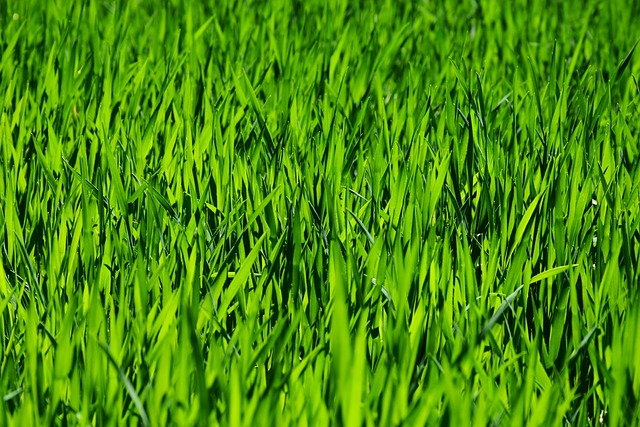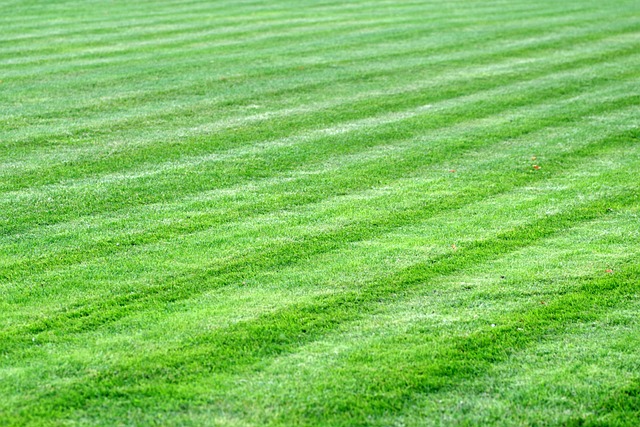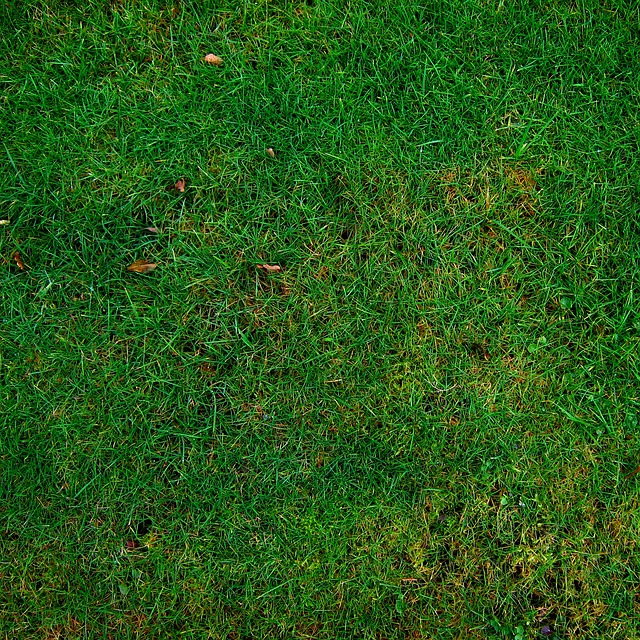When designing an efficient irrigation system for lawn care and landscaping, it's essential to consider your lawn's unique characteristics such as soil type, topography, and local climate to tailor the system for optimal performance. Soil variability, topographical features, and historical precipitation data all influence watering strategies and irrigation component selection. For instance, clay soils demand different watering tactics compared to sandy soils. Selecting the appropriate components like drip lines for gardens and rotating sprinkler heads for larger areas is best done in consultation with a licensed irrigation specialist, who can also advise on the integration of smart irrigation controllers that adjust schedules based on weather predictions. These advanced systems ensure efficient water use and cost savings while promoting lawn health. The installation process requires careful planning to optimize water management and plant health, including strategic placement of various irrigation components like spray heads and drip emitters within your garden layout. Post-installation, regular calibration, and monitoring are crucial for maintaining system efficiency, with smart controllers using real-time data to adjust watering schedules according to current weather conditions. Routine maintenance and seasonal adjustments ensure the system continues to support a healthy, thriving lawn, aligning with modern landscaping practices and sustainability goals for a vibrant lawn throughout the year.
Optimizing your lawn’s health and aesthetics hinges on effective water management, a key aspect of which is installing an efficient irrigation system. This article serves as a comprehensive guide for assessing your lawn’s specific needs, followed by a detailed step-by-step process for installation. With a focus on landscaping and lawn care, we delve into post-installation maintenance tips to ensure your irrigation system operates at peak performance, promoting a lush, vibrant lawn all year round.
- Assessing Your Lawn's Needs: A Preliminary Guide for Effective Irrigation System Installation
- Step-by-Step Irrigation System Installation: Enhancing Your Landscaping with Efficient Water Management
- Post-Installation Tips and Best Practices for Maintaining a Thriving Lawn through Smart Irrigation Solutions
Assessing Your Lawn's Needs: A Preliminary Guide for Effective Irrigation System Installation

When contemplating the installation of an irrigation system for your lawn, it’s imperative to conduct a thorough assessment of your lawn’s specific needs. This preliminary step ensures that the irrigation system you install is both efficient and tailored to your landscape’s unique characteristics. Begin by evaluating your soil type; different soils absorb water at varying rates. Clay soils, for example, retain moisture longer than sandy soils, necessitating a different irrigation approach. Additionally, consider your lawn’s topography, as slopes and low-lying areas may require specific sprinkler heads to optimize water distribution. Assessing local weather patterns and historical precipitation data can also inform your irrigation strategy, allowing for smarter water usage and cost savings.
Understanding your water source and pressure is equally critical. A professional assessment by a licensed irrigation specialist can provide valuable insights into the best system design for your property. They can advise on the most suitable irrigation components, from drip lines for flower beds to rotating nozzles for expansive lawns. Furthermore, leveraging smart irrigation controllers can further enhance efficiency by automatically adjusting watering schedules based on real-time weather forecasts. By integrating lawn care and landscaping considerations with advanced technology, you can ensure your irrigation system installation lays the foundation for a thriving, healthy lawn throughout the seasons.
Step-by-Step Irrigation System Installation: Enhancing Your Landscaping with Efficient Water Management

When embarking on the installation of an irrigation system to enhance your lawn care and landscaping efforts, a step-by-step approach is essential for ensuring efficient water management and optimal plant health. The process begins with a thorough assessment of your landscaping design, including the layout of your garden, the types of plants you have, and their respective water needs. This planning stage is critical as it informs the placement of irrigation components such as spray heads, drip emitters, and underground pipes. Once the design is finalized, the actual installation can proceed with precision and purpose.
Initially, trenches are carefully excavated to accommodate the network of pipes that will deliver water from the source to each point of use across your lawn or garden. The pipes should be placed at appropriate depths to prevent damage from gardening activities or heavy foot traffic. Subsequently, water valves and flow control devices are installed to manage the distribution and pressure of water throughout the system. After laying the pipes, the next step is to install the irrigation heads, ensuring they are positioned to evenly cover all areas of your landscaping without wasteful over-saturation or under-watering. The choice between spray heads for larger areas or drip emitters for more sensitive plants should be guided by the specific needs of each part of your landscape.
Finally, the system is connected to a water source and powered up, allowing for a test run to check for leaks, proper coverage, and overall functionality. Adjustments may be necessary at this stage to fine-tune the system’s performance, guaranteeing that every plant receives exactly what it needs for optimal health and growth. Regular maintenance and occasional updates to the system can further enhance its efficiency and longevity, ensuring your lawn care and landscaping efforts are supported by a reliable and resourceful irrigation system.
Post-Installation Tips and Best Practices for Maintaining a Thriving Lawn through Smart Irrigation Solutions

After installing a smart irrigation system, maintaining a thriving lawn requires diligent care and strategic management. To ensure your lawn receives optimal water levels without wastage, regularly calibrate your system to adapt to seasonal changes in weather patterns and precipitation. Monitor soil moisture sensors and adjust the irrigation schedule accordingly. These devices are crucial for conserving water and maintaining a healthy lawn ecosystem. Additionally, keep an eye on the weather forecast; adjusting the system before heavy rainfall or extreme heat waves can prevent overwatering and reduce costs.
For long-term success, it’s beneficial to conduct periodic checks of the irrigation system components, including sprinkler heads, valves, and pipes, to identify and fix any potential leaks or malfunctions promptly. Landscaping elements such as trees, shrubs, and flower beds may have varying water needs; set separate zones for these areas within your irrigation system to deliver precise amounts of water where needed. Utilizing weather-based or smart controllers can further enhance efficiency by activating the system based on real-time data, ensuring that your lawn care practices align with the latest in landscaping innovation and sustainability. Regular maintenance and smart adjustments will keep your lawn lush and vibrant throughout the growing season.
Effective lawn care and landscaping hinge on the judicious use of water, a resource increasingly valuable in many regions. The installation of an irrigation system is a prudent step towards nurturing a thriving lawn while conserving this vital resource. By meticulously assessing your lawn’s specific needs, following a detailed guide for installation, and adhering to post-installation maintenance best practices, you can ensure your landscaping remains lush and healthy throughout the year. With these strategies in place, your lawn will not only flourish but also contribute to a sustainable environment. Investing in smart irrigation solutions is a step towards transforming your outdoor space into an efficient, eco-friendly, and aesthetically pleasing oasis.
